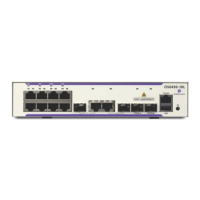OmniSwitch AOS Release 7 Network Configuration Guide March 2011 page 14-1
14 Configuring IPsec
Internet Protocol security (IPsec) is a suite of protocols for securing IPv6 communications by authenticat-
ing and/or encrypting each IPv6 packet in a data stream. IPsec is a framework of open standards designed
to provide interoperable, high quality, cryptographically-based security for IPv6 networks through the use
of appropriate security protocols, cryptographic algorithms, and cryptographic keys. The set of security
services offered includes access control, connectionless integrity, data origin authentication, detection and
rejection of replays (a form of partial sequence integrity), and confidentiality (via encryption).
These security services are provided through use of two security protocols, the Authentication Header
(AH) and the Encapsulating Security Payload (ESP), and through the use of cryptographic key manage-
ment procedures and protocols.
Note. The OmniSwitch currently supports IPsec for IPv6 only.
In This Chapter
This chapter describes the basic components of IPsec and how to configure them through the Command
Line Interface (CLI). CLI commands are used in the configuration examples; for more details about the
syntax of commands, see the OmniSwitch CLI Reference Guide.
Configuration procedures described in this chapter include:
• Master Key Configuration (see “Configuring an IPsec Master Key” on page 14-9).
• Security Policy Configuration (see “Configuring an IPsec Policy” on page 14-10).
• Security Policy Rule Configuration (see “Configuring an IPsec Rule” on page 14-13).
• SA Configuration (see “Configuring an IPsec SA” on page 14-14).
• Security Association Key Configuration (see “Configuring IPsec SA Keys” on page 14-15).
• Discard Policy Configuration (see “Assigning an Action to a Policy” on page 14-12)

